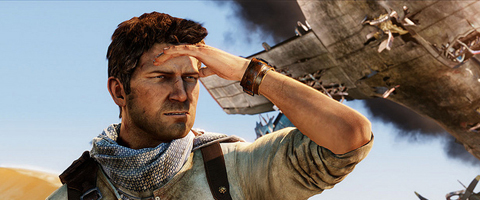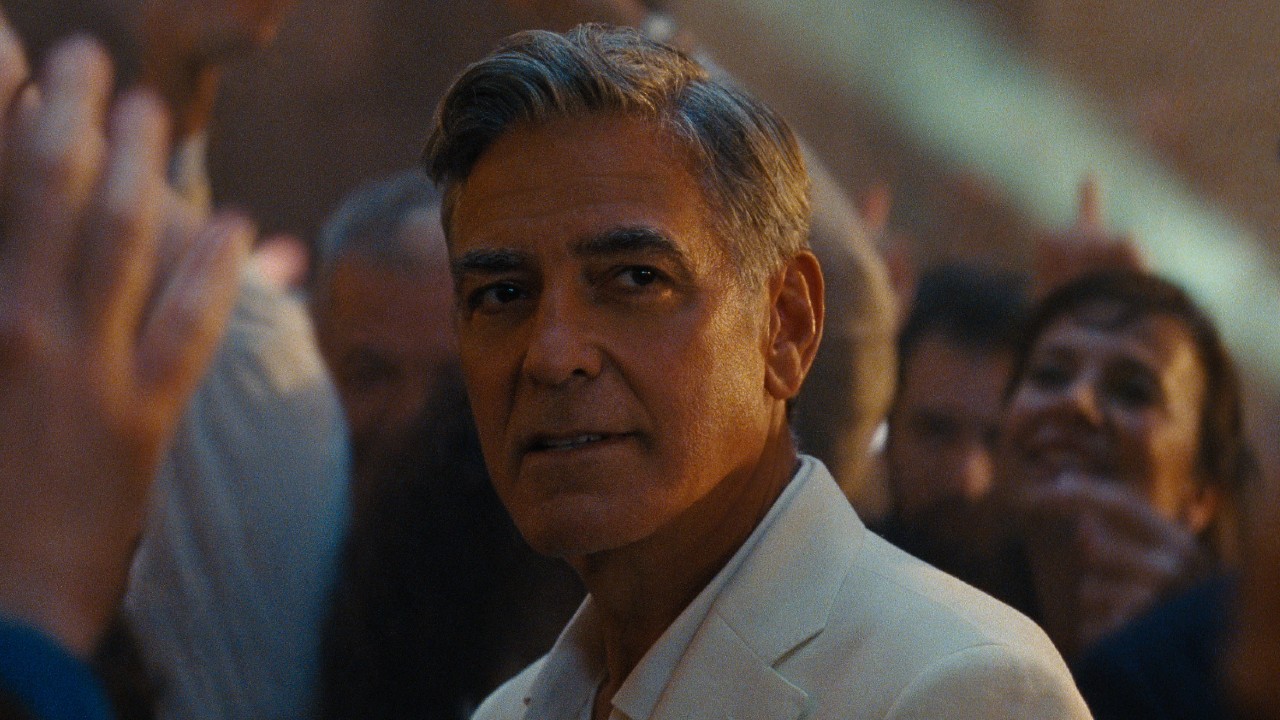Uncharted 3 Review: If It Ain't Broke, Don't Fix It

Uncharted 3: Drakes Deception is easily one of the best action games to come around since, well…Uncharted 2. The puzzles are just as fun, the traversal just as kinetic, and the set pieces, well they’re pretty awesome too. Indeed, everything you loved about the predecessor is back and better than ever, with one glaring exception; if you’re looking for the same level of innovation found in the previous title, you’re going to be disappointed.
Although “linear” is becoming an increasingly dirty word when it comes to game design, Uncharted’s use of scripted gameplay is still second to none. While occasionally the game seems as though it’s playing itself, the majority of these sequences allow just enough control to keep you feeling firmly planted in the driver’s seat. Whether it be escaping a burning château, fighting on the open loading ramp of an in-flight cargo plane, or outrunning a tsunami of oversized spiders, you’ll always find yourself an active participant in the action. The games ability to seamlessly transition between game-play and cinematic sequences creates the feeling that you’re always in command of the action, regardless of whether you actually are or not.
Even in the context of the last game, each set piece feels original. Uncharted 3 does a good job at mixing it up so that nothing feels overly recycled. Remember the recurring jet ski segments from the first game? Those days are long gone. More than once I found myself astounded at what I had just played through. Naughty Dog’s ability to blur the line between blockbuster action movie and video game really makes the Uncharted series something special. There aren’t a whole lot of games like this.
Obviously, one of the downsides inherent to this sort of linear game design is that it theoretically creates a lack of replayability. There’s always a clearly defined path to follow and events will always be triggered at the same predetermined locations along it. Regardless of how many times you play through a specific segment, your experience will always be more or less the same. Although ultimately I feel that games like Arkham City and Assassins Creed are pushing us away from this type of conceit, in this case, the ends justify the means. Because the segments themselves are so engaging, I don’t mind playing them over and over again. This is not unlike watching a favorite movie for the thousandth time. Just because you know exactly what’s going to happen, doesn’t mean that it’s not going to be fun to watch when it does.
Aside from the massive set pieces, Uncharted’s biggest strength is its story. As you might expect, the third installment of the franchise doesn’t stray too far from the familiar Indiana Jones style supernatural/archeological adventure. You’ll find yourself trotting all around the globe and solving puzzles in all sorts of exotic locals and ancient tombs. While occasionally the plot relies a little too heavily on coincidences and clichés for my liking, on the whole the story’s pretty solid. The villain is the best of the series, and Middle Eastern setting is well imagined. Wandering through a near endless desert is one of the more memorable moments the franchise has seen thus far.
Perhaps what the story does best is endow the characters with a bit more back-story than any of the previous games. As you probably know already, Nathan Drake, Victor Sulivan, and Elena Fisher are some of the best characters that video games have to offer. Regardless of what you might think of the gameplay, the Uncharted series has set the standard for writing and voice acting in video games since its premiere in 2007. The third chapter in the series is no exception.
The characters in Uncharted are believable in a way that is rare in video games. Just as Naughty Dog has managed to synthesize game-play and cut-scenes, so too have they managed to synthesize writing and acting. While very rarely will I ever take this much time to discus voice acting in a video game review, I can’t stress enough how important it is to this franchise specifically. You’ll never get the feeling that Nathan Drake is just some dude sitting in a recording booth in Santa Monica. He’s witty, charming, and his dialogue overlaps naturalistically with the other characters. The actors clearly have chemistry and it makes a noticeable difference in the final product. The player is able to relate to Drake as if he were a real person. This is huge. So much so in fact, that the characters and story alone are well worth the price of admission.
Your Daily Blend of Entertainment News
One last audio note to mention: Greg Edmonson (of Firefly fame) reprises his role as composer and continues to do a spectacular job. As you’d expect from a game of this magnitude, Sony’s spared no expense in providing the full symphonic treatment. The themes are familiar but adjusted according to setting. While I could literally talk about the soundtrack all day, at this point you probably know how music works in video games. While not groundbreaking, the soundtrack is just about as good they come. Don’t be surprised if you find it stuck in your head weeks after playing.
In terms of the gameplay itself, it returns relatively unchanged from the previous title. Although there’s no giant blue ape-men to annoy you this time around, your enemies will still soak up more than their fair share of bullets before going down. With that said, I feel that the game does a good job at challenging the player without creating a frustrating level of difficulty. Checkpoints are frequent enough that dying never makes you want to give up. You’re always seconds away from being back in the action.
As with the shooting, the fighting mechanics are more of the same, but with several minor tweaks. As with the previous two games, you’re given the ability to punch, grab, and counter, but now Drake will occasionally grab a nearby wrench or pipe for a quick one-off attack. It doesn’t happen frequently enough to have a significant effect on the fighting system itself, but it does add a nice bit of cinematic flair. After all, what’s not to like about unexpectedly clobbering henchmen with large blunt objects?
Graphically, Uncharted is still very much on the bleeding edge of what the PS3 can achieve. While everyone seems to be speculating on exactly how much potential the current consoles left, I suspect we've hit the peak. No PS3 game will ever look significantly better than Uncharted 3. What makes Deception’s visuals so great isn’t necessarily the textures, or polygon count, so much as it’s the animation. Drake has a sense of weight to him. He moves naturally and is constantly interacting with the environment. Small details, like having the character touch an approaching wall or shift his weight when changing direction, go a long way in making him feel alive. Drake’s clothes get wet after he’s been in the water, and the sand gets stuck in his hair when the wind blows. While neither of these effects are new to the franchise per say, they’re both the type of thing that sets the game apart from the crowd. The Uncharted series has always been known for it’s attention to detail, and while many of these details aren’t new, that doesn’t make them any less impressive.
Although the single player campaign is clearly the game’s bread and butter, I’d be remiss if I didn’t take the time to discuss the game’s multiplayer component. Even though it may not be highlight, both modes are extremely well made.
The Competitive Multiplayer is pretty standard. While there are all sorts of additional modes and extras thrown in to create a unique experience, more often than not, everything boils down to killing as many members of the opposing team as possible within the allotted time constraint. If your team falls too far behind, you’ll occasionally be given a bonus boost to help even the odds. As you progress through the multiplayer you’ll earn points which can be exchanged for new weapons, boosters, and kick backs, as well as unlockable clothing and characters. Those of you who’ve already played the Beta, probably have a good idea of what to expect here. In fact, if you’ve played through any competitive multiplayer game in the last several years, you probably have a good idea of what to expect here. All the systems work as well as you’d anticipate, but nothing is especially groundbreaking. Indeed, where the competitive multiplayer really starts to shine is in the maps. Not only are they able to evoke the single player campaign without feeling overly recycled, but also you’ll occasionally find yourself on a map that you’d never have thought possible in a multiplayer context. My personal favorite involves fighting through a convoy of cargo-trucks as you race down a tarmac in pursuit of a plane just prior to take off. Not only it this fun to play, but it captures the best moments of the franchise and slightly modifies them to fit within a multiplayer context.
For someone who’s as bad at the competitive multiplayer as I am, it’s a relief to know that the Co-Op options are equally as expansive. You’re given two choices: regular co-op and adventure mode. Regular co-op is Uncharted’s Horde mode. You and a friend are stuck in an enclosed map and must survive as long possible. Instead of sending wave after wave of increasingly difficult enemies, each wave has it’s own objective. Some objectives will force you to defend a specific area, while others will require you to return a missing idol to it’s treasure chest. The fact is, It’s just different enough from Horde mode or MW3's Spec Ops to keep it feeling original.
Adventure mode offers five multiplayer levels that are specifically designed with co-op in mind. Each chapter is fairly lengthy and forces you to work together with your partner to succeed. It’s a hell of a lot of fun, if you’ve got someone to play with. Playing with strangers is possible (at least in an ideal world) but trying to work together with anyone that you’ve met on the internet is a dangerous proposition at best.
For developers like Naughty Dog, the biggest problem with creating a great game is the assumption that the sequels will always be better. While any formula can grow stale, when it comes to Uncharted, I’m completely satisfied with more of the same. Uncharted 2 not only redefined the Uncharted franchise, but also action games a whole. If it ain’t broke, don’t fix it. Uncharted 3 delivers an experience completely on par with it’s predecessor, and at least for now, that makes it more than deserving of your time.
Platforms: PS3
Developer: Naughty Dog
Publisher: Sony Computer Entertainment
ESRB: Teen
Rating:

